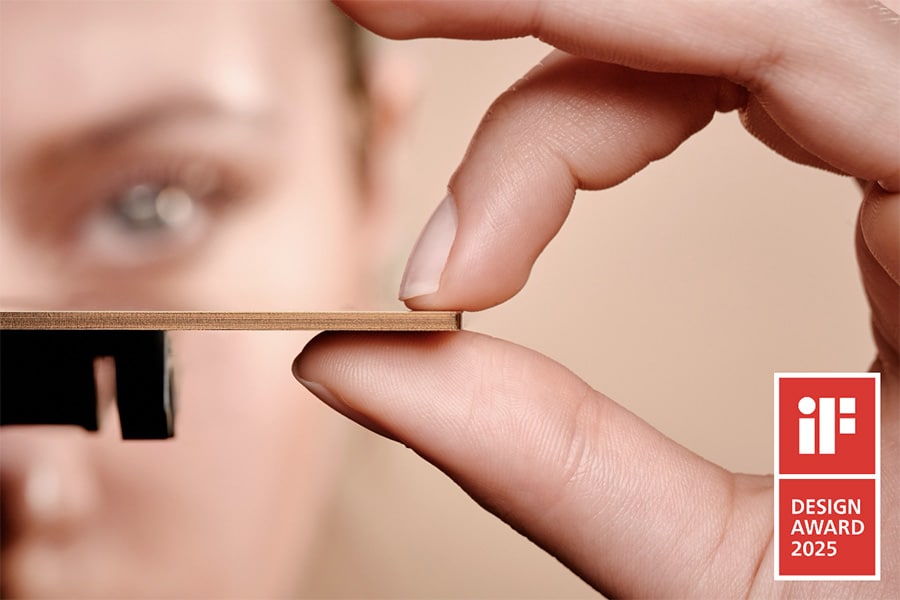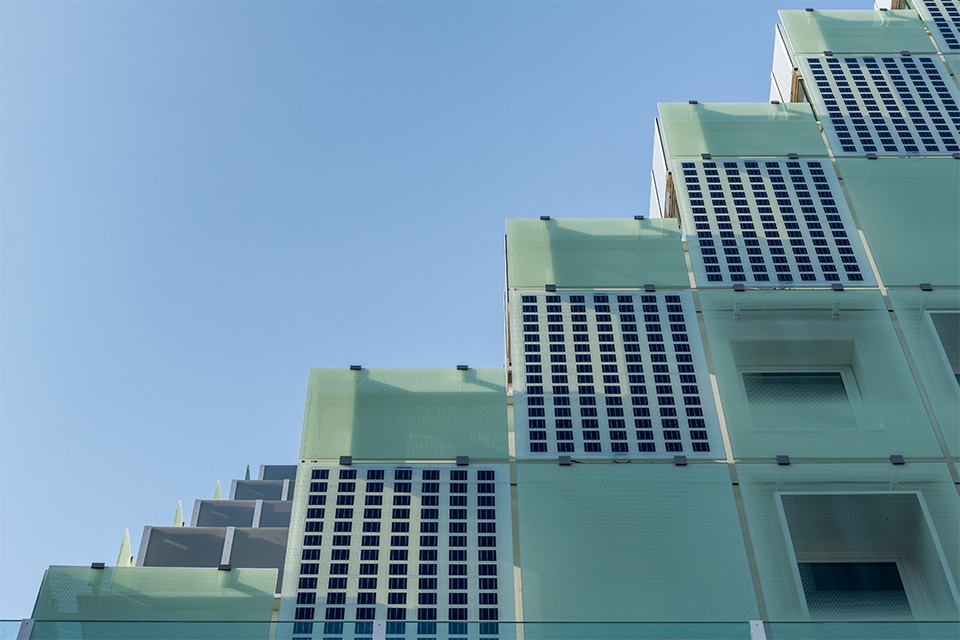
XXL fireproof glass. Tested the flattest
As product manager, Jan Liebeton is responsible for fire-resistant glass. "In addition to the production of glass itself, we are also responsible for the operations that make it suitable for a specific application." For example, insulating glass and everything related to it is an important branch within AGC Glass' product range.
Special types of glass, including fire-resistant glass, must comply with many rules. "The rules that apply to the glass itself are regulated at the European level, but in the Dutch building code, which states what requirement a building component must meet, is different than in other countries. All products must be tested beforehand in the system in which it is to be applied. You want to be sure that the whole thing is fire-resistant; glass and frame. The detailing often makes the difference. This testing costs a lot of time and money, but we only put something on the market when it is completely in order.

By now, of course, AGC Glass knows a lot about glass. "In the 40 years that we have been making Pyrobel, we have gained a lot of experience. So now we often make a combination of soundproofing, burglarproofing and insulating glass, for example."
All these features have also become increasingly important for indoors. Liebeton: "Nowadays, interior doors also have to meet considerable soundproofing requirements. It is undesirable for someone in the hallway to be able to hear through a door what is being discussed in a room."
When redeveloping existing properties, glass has an important role to play. "Often people want to achieve certain transparency and sightlines. So a lot of glass is used; it must then be soundproof and fire-resistant." Also, the replacement of wire glass with Pyrobelite is increasingly topical.

Different fire resistant classes
AGC Glass' fire-resistant glass is marketed under the brand name Pyrobel. The glass comes in all possible fire resistance classes: E (stops flames, smoke and gas, heat conduction is possible), EW (stops flames, red and gas, heat radiation limited to max. 15 kw/m² and EI (stops flames, smoke and gas. Heat conduction is blocked). Up to even 180 minutes of fire resistance. "Pyrobel consists of several thinner layers of glass and a number of thin fire-resistant intermediate layers. Even in the simplest version, Pyrobel 10, this glass meets quite a lot of requirements."
Still, Pyrobel products did not meet all modern requirements. "With our existing range, we were technically limited to dimensions of about 2 x 3 meters in terms of production. In order to be able to handle larger heights in particular, we added a new technology to our range, called Pyrobel-T, in addition to the existing technology. This now allows us to deliver dimensions of 2 x 4½ meters. "There is an increasing need for large windows, for example, for shopping malls, airports, or sports complexes, but also for commercial spaces above which apartments are being built.
With Pyrobel-T, we can provide increasingly large windows. This creates unity and a sense of spaciousness that many architects are looking for."

Great opportunity with Pyrobel-T
The manufacturing process for fire-resistant Pyrobel-T glass uses a special technology. The glazing consists of toughened glass plates with a transparent gel in between. In the event of a fire, the gel forms a screen that dampens the temperature and/or heat radiation.
"Classic Pyrobel is modularly constructed with multiple fire-resistant layers to achieve the desired fire resistance. It is first produced on large sheets and then cut to size. With Pyrobel-T, the glass generally consists of two tempered glass sheets with a thicker fire-resistant layer in between. This has advantages, but also means that the glass is produced directly to size; cutting to size later is not possible. Therefore, production and delivery also take longer. In combination with insulating glass, AGC Glass can achieve large dimensions in a nice clear optical quality with Pyrobel-T, according to Liebeton.
"We often hear that we provide much flatter glass compared to competitors. True! However, we are also critical of this. The flatter the glass, the less distortion. Our quality standards are high and that is very much appreciated.
Speaking of quality, testing is one of AGC Glass's spearheads. For example, all Pyrobel-T glass panels underwent the Heat Soak Test. In tempered glass, spontaneous glass breakage can occur due to nickel sulfide inclusions (NiS). The Heat Soak Test ensures that glazings with latent damage risk are removed. As standard, 100% of Pyrobel-T glazings undergoes this test.
"In addition, we test for our customers to make sure that certain applications and connections work. We often know this, but it is up to us to prove that the glass, connections and frames together comply with the regulations. This takes time; so it is beneficial if we are involved in a project as early as the architectural phase to provide advice."
AGC Glass is constantly working on new solutions in a development laboratory in southern Belgium. Here, 250 people work on glass products and processes. Says Liebeton, "Thanks to this testing, we have recently been allowed to nail our glass instead of screws. This is easier and cheaper."
For those who want to learn more about AGC Glass products, there is a new Web site. Architects can find all kinds of content here, from technical details and case studies to customer experiences and information on innovations.



